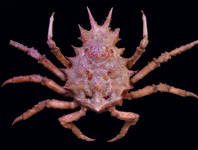Abstract
A new species of the family Alloionematidae was isolated from a rotten winged gourd at White Crane Garden, San Francisco, USA, sampled by Christopher Nelson in November 2010, and a live culture is deposited in Félix Lab Strain Database (http://www.justbio.com/worms/index.php), IBENS, Paris, France. Specimens from the culture have been examined. Both morphologically and molecularly, the nematode described herein as Alloionema californicum n. sp. differs from the other alloionematid species, A. appendiculatum and Neoalloionema tricaudatum. It is characterised by having a narrow stoma, 2.5–3.5 or 4 times longer than broad in adults or dauer juveniles respectively. Lateral fields are not present in adults but occur as one prominent ridge in dauers. Males have no bursa, six pairs of genital papillae and one single papilla. Dauers have large apparent phasmids in the middle of the tail. The ecology of the newly described species is unknown but probably it is a saprobic bacteriophagous nematode preferring rotting organic material.
References
Andrássy, I. (1983) A taxonomic review of the sub-order Rhabditina (Nematoda: Secernentea). Office de la Recherche Scientifique et Technique Outre-Mer, Paris, 512 pp.
Čurčič, B.P.M., Sudhaus, W., Dimitijevič, R.N., Makarov, S.E. & Tomič, V.T. (2008) Rhabditophanes schneideri (Rhabditida) phoretic on a cave pseudoscorpion. Journal of Invertebrate Pathology, 99, 254–256.
http://dx.doi.org/10.1016/j.jip.2008.07.007Blaxter, M.L., De Ley, P., Garey, J.R., Liu, L.X., Scheldeman, P., Vierstraete, A., Vanfleteren, J.R., Mackey, L.Y., Dorris, M., Frisse, L.M., Vida, J.T. & Thomas, W.K. (1998) A molecular evolutionary framework for the phylum Nematoda. Nature, 392, 71–75.
http://dx.doi.org/10.1038/32160Courtney, W.D., Polley, D. & Miller, V.L. (1955) TAF, an improved fixative in nematode technique. Plant Disease Reporter, 39, 570–571.
De Ley, P. & Blaxter, M. (2002) Systematic position and phylogeny. In: Lee, D.L. (Ed.), The biology of nematodes. Taylor & Francis, London, pp. 1–30.
http://dx.doi.org/10.1201/b12614-2Hall, T.A. (1999) BioEdit: a user-friendly biological sequence alignment editor and analysis program for Windows 95/98/NT. Nucleic Acids Symposium Series, 41, 95–98.
Ivanova, E., Luc, P.V. & Spiridonov, S. (2016) Neoalloionema tricaudatum gen. n., sp. n. (Nematoda: Alloionematidae) associated with a cyclophorid snail in Cuc Phuong Natural Park, Vietnam. Nematology, 18, 109–120.
http://dx.doi.org/10.1163/15685411-00002946Mengert, H. (1953) Nematoden und Schnecken. Zeitschrift für Morphologie und Oekologie der Tiere, 41, 311–349.
http://dx.doi.org/10.1007/BF00407426Nadler, S.A., Carreno, R.A., Mejía-Madrid, H., Ullberg, J., Pegan, C., Houston, R. & Hugot, J.P. (2007) Molecular phylogeny of clade III nematodes reveal multiple origins of tissue parasitism. Parasitology, 134, 1421–1442.
http://dx.doi.org/10.1017/S0031182007002880Nei, M. & Kumar, S. (2000) Molecular evolution and phylogenetics. Oxford University Press, Oxford, 352 pp.
Nermuť, J., Půža, V. & Mráček, Z. (2015) Re-description of the slug-parasitic nematode Alloionema appendiculatum Schneider, 1859 (Rhabditida: Alloionematidae). Nematology, 17, 897–910.
http://dx.doi.org/10.1163/15685411-00002911Nguyen, K.B. (2007) Methodology, morphology and identification. In: Nguyen, K.B. & Hunt, D.J. (Eds.), Entomopathogenic nematodes: systematics, phylogeny and bacterial symbionts. Nematology Monographs and Perspectives. Vol. 5. Brill, Leiden, pp. 59–119. [Hunt, D.J. & Perry, R.N. (Series Eds.)]
http://dx.doi.org/10.1163/ej.9789004152939.i-816.25Nguyen K.B. & Smart, G.C. (1995) Scanning electron microscope studies of Steinernema glaseri (Nematoda: Steinernematidae). Nematologica, 41, 183–190.
http://dx.doi.org/10.1163/003925995X00152Ross, J.L., Ivanova, E.S., Spiridonov, S.E., Waeyenberge, L., Moens, M., Nicol, G.W. & Wilson, M.J. (2010) Molecular phylogeny of slug-parasitic nematodes inferred from 18S rRNA gene sequences. Molecular Phylogenetics and Evolution, 55, 738–743.
http://dx.doi.org/10.1016/j.ympev.2010.01.026Rzhetsky, A. & Nei, M. (1992) A simple method for estimating and testing minimum evolution trees. Molecular Biology and Evolution, 9, 945–967.
Saitou, N. & Nei, M. (1987) The neighbour-joining method: A new method for reconstructing phylogenetic trees. Molecular Biology and Evolution, 4, 406–425.
Tamura, K., Stecher, G., Peterson, D., Filipski, A. & Kumar, S. (2013) MEGA6: Molecular evolutionary genetics analysis version 6.0. Molecular Biology and Evolution, 30, 2725–2729.
http://dx.doi.org/10.1093/molbev/mst197Vrain, T.C., Wakarchuk, D.A., Levesque, A.C. & Hamilton, R.I. (1992) Intraspecific rDNA restriction fragment length polymorphism in the Xiphinema americanum group. Fundamental and Applied Nematology, 15, 563–573.

